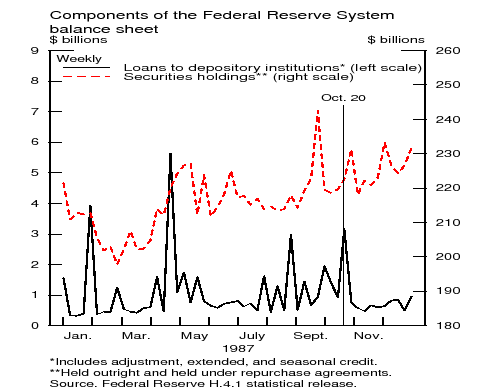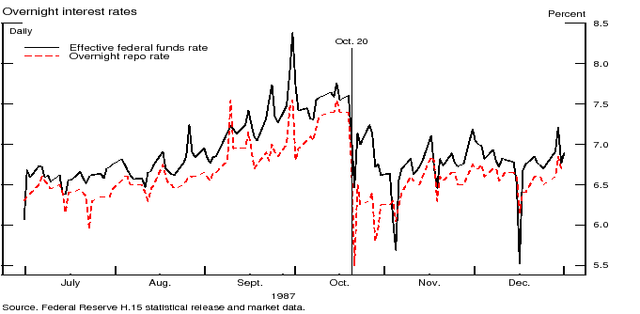Phiên bản Thứ Hai Đen tối năm 1987 tái hiện: giao dịch nhóm bị đảo ngược, cú sốc thanh khoản, điều gì xảy ra tiếp theo?
Original author: Zhao Ying, Wall Street News
The 1987 version of Black Monday was staged again yesterday, with global financial markets collapsing and plummeting, and words such as circuit breakers, bear market, and historical records were everywhere.
The Nikkei 225 and Topix index both plunged more than 12%, triggering circuit breakers several times during trading. The Taiwan stock market recorded its biggest drop since 1967, South Korea recorded its biggest drop since 2008, and the Dow Jones Industrial Average fell more than 1,000 points, recording its biggest drop in two years together with the SP. Futu, Fidelity and others warned of trading failures.
The last time the global market experienced such a tragic baptism was the stock market crash on October 19, 1987.
At that time, stock markets in Asia and the Pacific plunged, with the Nikkei index falling 14.9%, the Hang Seng index plummeting more than 40%, and the New Zealand stock index even plummeting 60%. The US market also fell into chaos, with the Dow Jones Industrial Average plummeting 22.6% and the SP 500 index plummeting 30%. About $1.71 trillion in global stock markets was wiped out.
In addition to being similarly shocking, the triggers for the two plunges were also similar, with arbitrage trading and programmatic trading undergoing a big reversal. Learning from history, what will happen next? Will the Federal Reserve once again step in to save the market?
Black Monday 1987
Looking back at the U.S. stock market performance in 1987, on October 14, the U.S. government announced a trade deficit that was larger than expected, the U.S. dollar depreciated, and the market began to fall.
On Friday, October 16, the U.S. House of Representatives introduced legislation to eliminate certain tax benefits related to financed mergers and acquisitions, which intensified the decline in U.S. stocks and set the stage for the turbulence of the following week;
When the market opened on Monday, October 19, people panicked and saw that the selling orders in the market were far greater than the buying orders. Due to the huge difference, many market makers did not even provide market making quotes in the first hour.
The US SEC later pointed out that by 10:00, 95 SP 500 stocks had not yet opened; the Wall Street Journal pointed out that 11 of the 30 Dow Jones stocks were unable to open for trading.
At the same time, as a large arbitrage space emerged between stock index futures and stocks, a number of trading institutions carried out arbitrage transactions. As the stock market continued to plunge, a large number of hedging positions further shorted index contracts in the stock index futures market, which in turn continued to drive the stock index to plunge.
At the close, the Dow Jones Industrial Average plummeted 22.76%, the biggest drop since 1929.
Before the opening of the market on Tuesday, October 20, the Federal Reserve issued a brief statement and announced an emergency rate cut of 50 basis points + quantitative easing to save the market:
The Federal Reserve today stood firm to its role as the nations central bank, affirming its willingness to serve as a source of liquidity to support the economy and financial system.
The market also stabilized on the day the Fed made its statement. U.S. stocks continued to fall in early trading. The Chicago Board Options Exchange and the Mercantile Exchange suspended trading at noon, resumed trading in the afternoon, and then rebounded.
On October 21, the market began to recover some of its losses.
Arbitrage and programmatic trading liquidation triggered an explosion
Similar to 1987, Black Monday in 2024 was also triggered by a perfect storm.
At that time, the U.S. stock market had been in a bull market since 1982, and people believed that it was time for adjustments. However, the current bull market in U.S. technology stocks driven by the AI craze has also made investors chilled as cicadas.
The second is the reversal of group trading. In the stock market crash of 1987, program trading was considered to be one of the culprits. The trading program of the investment portfolio sold stocks, which created a domino effect.
The recent stock market crash is partly due to the reversal of the carry trade triggered by the narrowing of the interest rate differential between the United States and Japan. The Bank of Japan unexpectedly raised interest rates last week, and the Federal Reserve released a signal of interest rate cuts after the meeting last week. The Feds September interest rate cut is almost fully priced in. The sell yen, buy dollars carry trade, which was previously the most popular in the foreign exchange market, is no longer attractive, and investors have begun to exchange their US dollar assets back to yen.
Meanwhile, the Friday before the 1987 crash also saw “triple witching” — stock options, index futures and index options contracts all expired at the same time, leading to severe instability in the final hours of trading on Friday and extending the turmoil into Monday.
Finally, the analysis attributed the sharp drop to mass hysteria. Every time the market falls sharply, investors herd mentality will exacerbate the decline.
Will the Federal Reserve step in to save the market again?
Learning from history, what actions will the Federal Reserve take?
In response to the market crash in 1987, the United States emergency cut interest rates, established a circuit breaker mechanism, and provided liquidity to rescue the market.
To slow the decline in financial markets and prevent spillover effects to the real economy, the Federal Reserve moved quickly to provide liquidity to the financial system, pumping billions of dollars into the economy through quantitative easing.
At the same time, then-Federal Reserve President Alan Greenspan announced an emergency 50 basis point rate cut, lowering the federal funds rate from over 7.5% on Monday to around 7% on Tuesday.
In addition, regulators also introduced circuit breakers for the first time to prevent market crashes caused by program trading. Once there is an abnormal decline or rise in the stock market, trading will be stopped immediately.
How will the crash end?
Analysts believe that the worst outcome could be a repeat of 2008, but this seems unlikely. Although some large US banks collapsed last year due to bad bets on government bonds, banks are much less leveraged than before, and the banking system is less affected by liquidity crises because private credit has taken on most of the risks that banks have taken in the past. Huge losses are possible, and private funds may get into trouble, but this will take time and will not trigger the same systemic crisis.
Ideally, excess stock market volatility would subside, as it did in 1987, without causing wider trouble, and we expect that process to subside more slowly than in 1987. AI mania could cause further declines in stock prices: Even after a 30% drop from its June high, Nvidia’s stock has doubled this year. But markets are already closer to normal, with the Nasdaq 100 up just 6% year to date and the SP up less than 9%.
Yardeni, the father of Bond Guardians, believes:
The danger of a big market sell-off is that it could become self-reinforcing and turn into a credit crunch. It is conceivable that the unwinding of this carry trade could turn into some kind of financial crisis, leading to a recession.
However, he stressed that he personally did not predict that this would ultimately result.
This article is sourced from the internet: 1987 version of Black Monday replayed: group trading reversed, liquidity shock, what happened next?
Related: Sui Bridge launches incentive program on testnet
Original author: Sui Foundation Compiled by: Odaily Planet Daily Asher Sui Bridge , a native bridge protocol designed for bridging assets and data between Sui, was launched on the testnet today. As a native protocol, Sui Bridge can easily and securely transfer ETH, wBTC, USDC, and USDT between Ethereum and Sui, making it an important part of Sui infrastructure. Leveraging the inherent security and speed of Sui, Sui Bridge is powered by Sui network validators and provides a new path into Sui. As the Sui ecosystem grows, diverse, secure, and reliable bridge solutions become a fundamental component of a healthy DeFi ecosystem. Bridging promotes interoperability between different blockchains, enabling assets and data to flow across networks. This not only enhances liquidity, but also expands the utility of digital assets, making…











